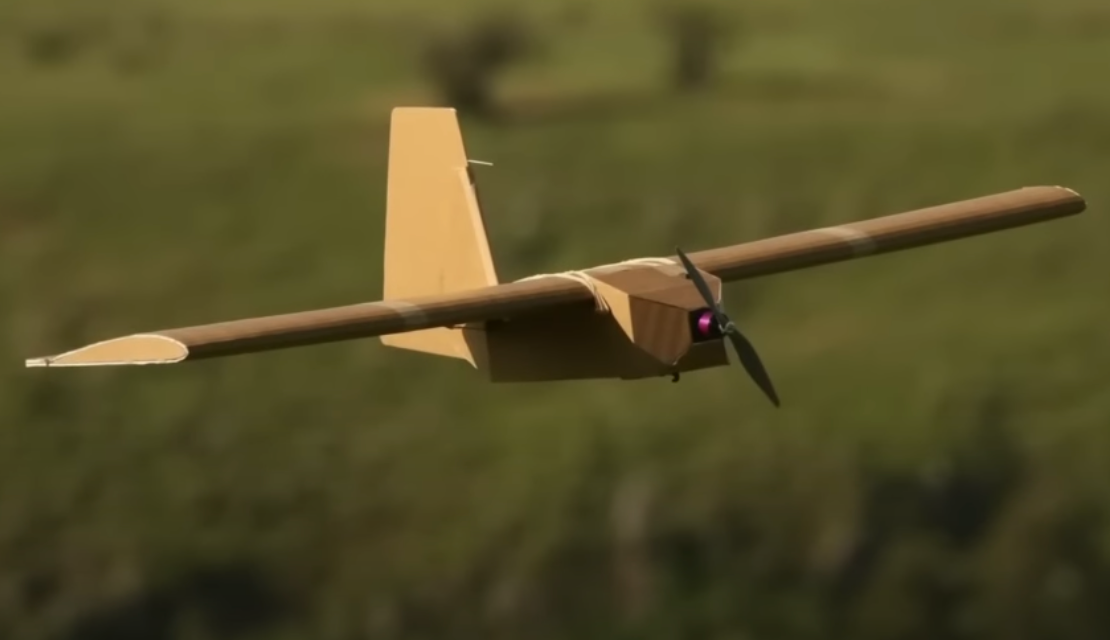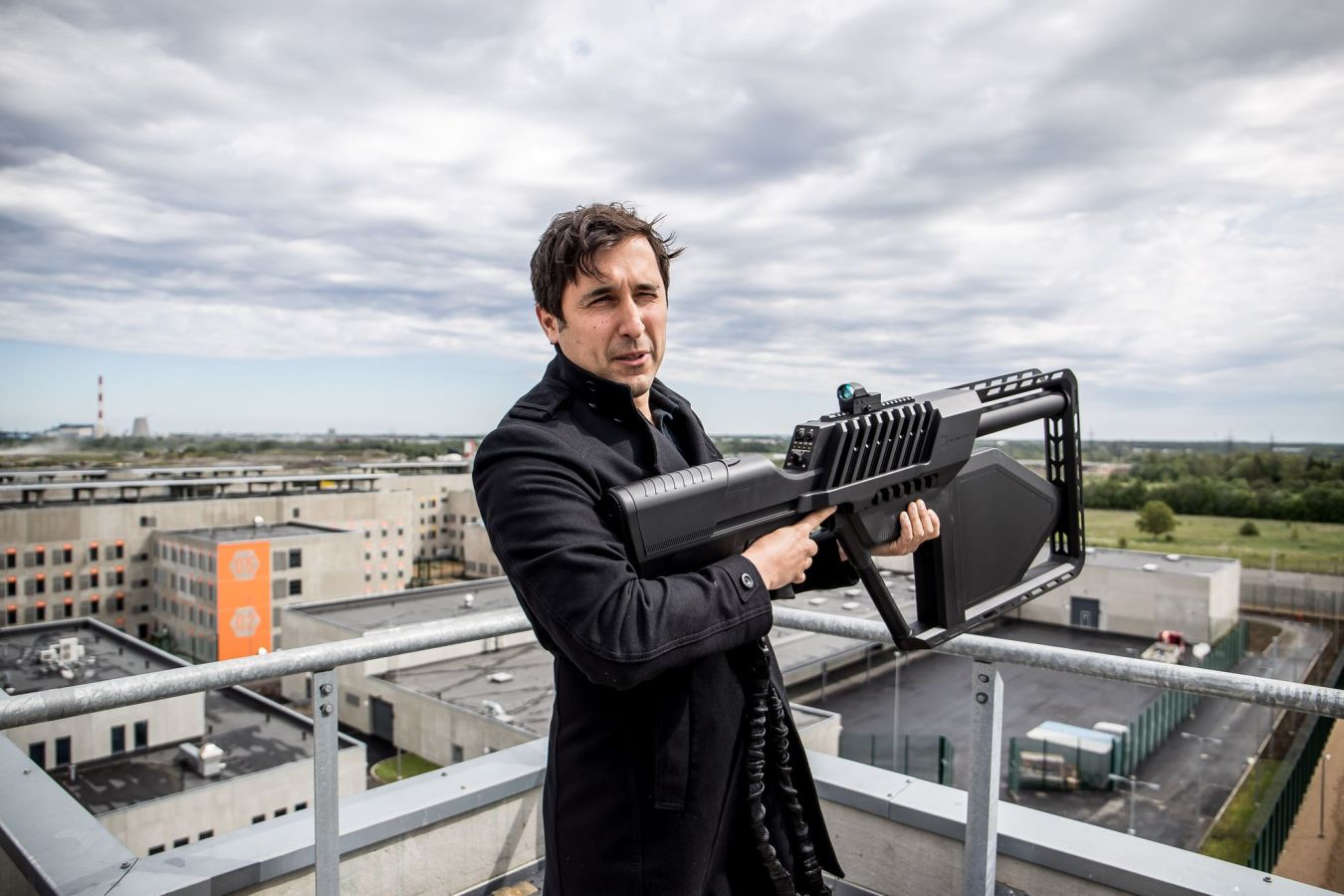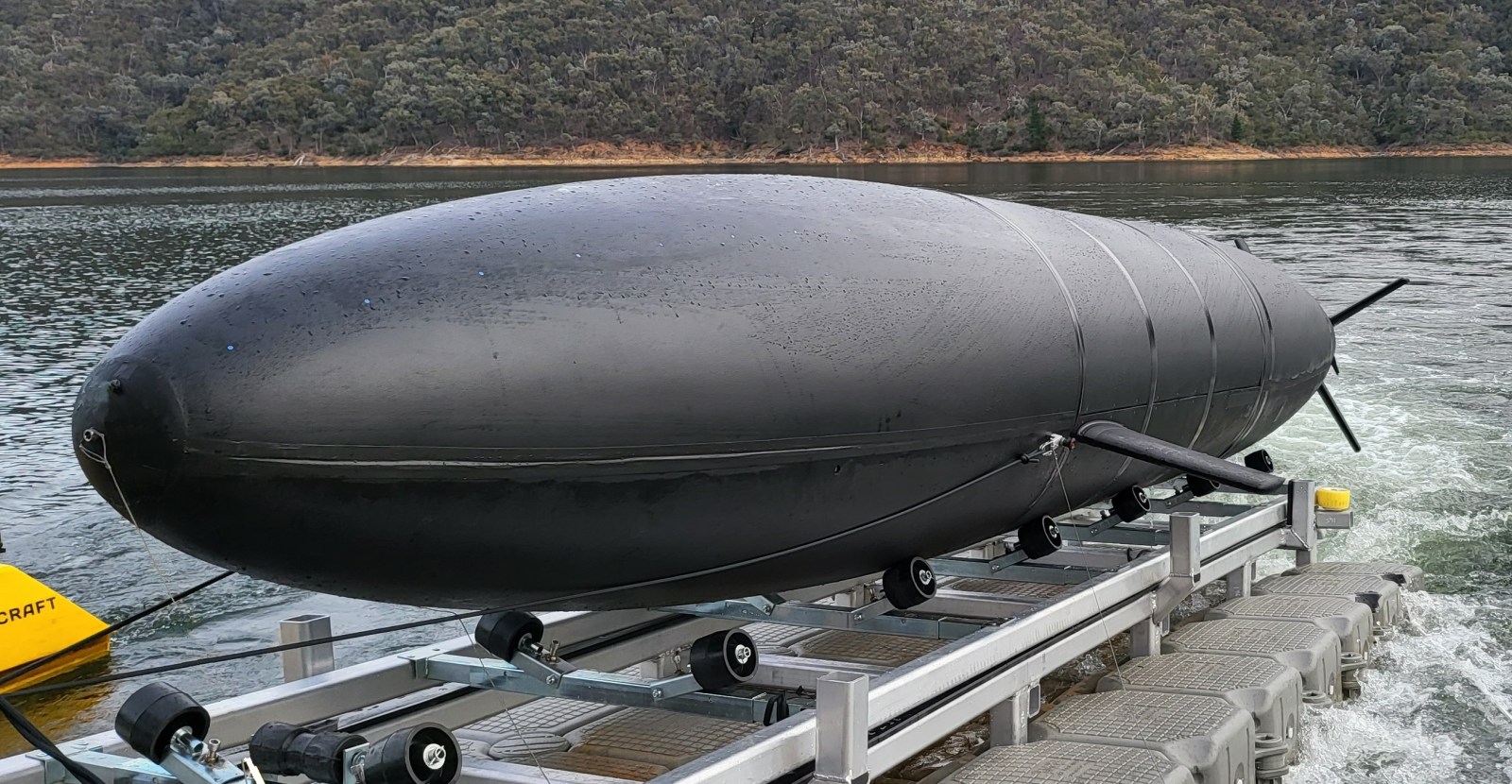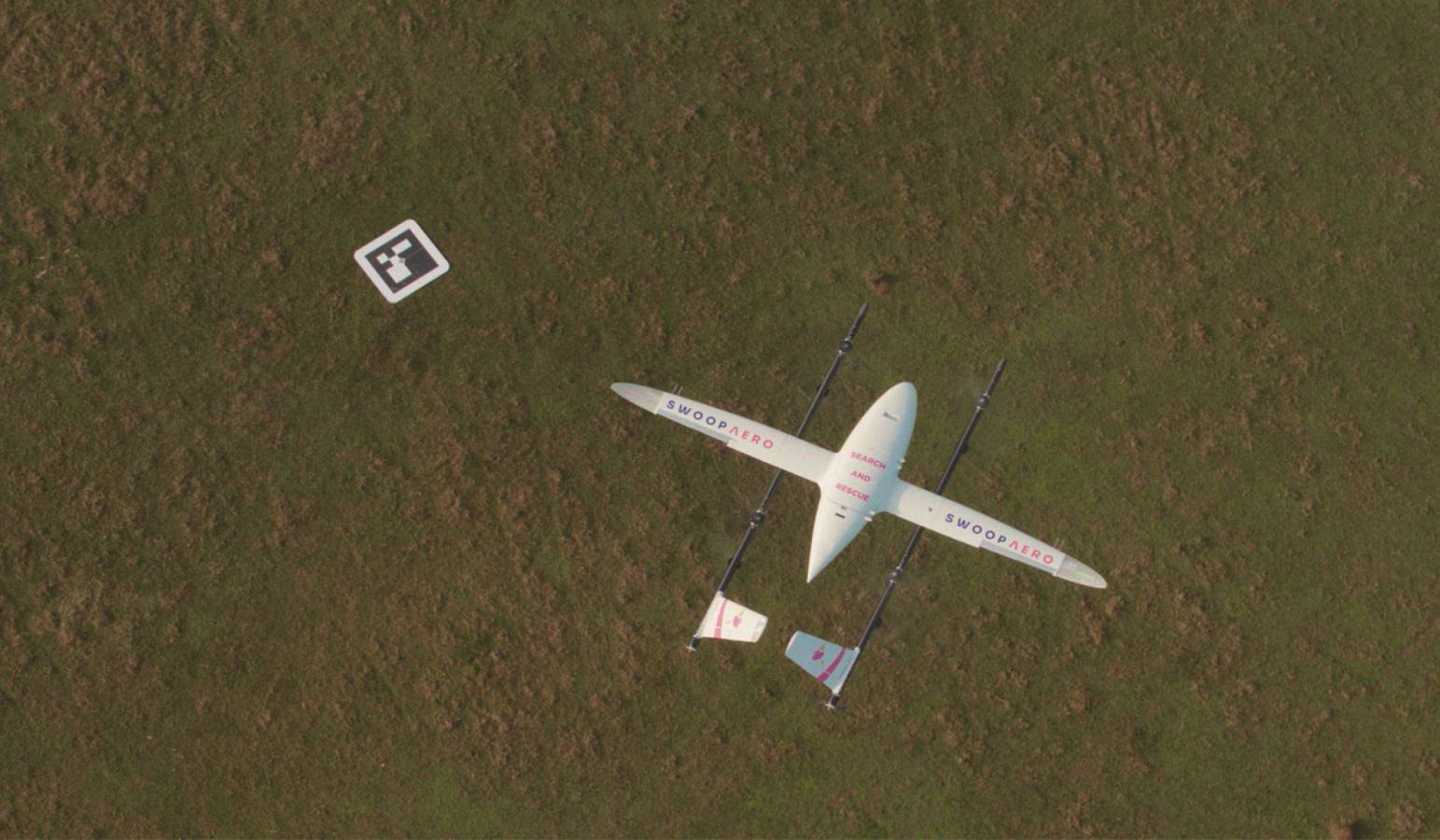Dubbed the “origami of death”, Melbourne-made flatpack drones assembled with glue and rubber bands have been hitting targets inside Russia since June, most recently destroying US$100 million worth of aircraft.
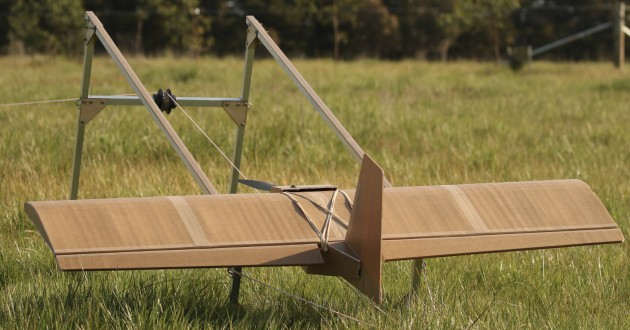
Family-owned Australian company SYPAQ Systems has been sending 100 cardboard drones a month to Ukraine for the last year. Designed to carry more benign payloads, some have been hitting deep inside Russia loaded with explosives.
The cardboard Corvo drone takes an hour to assemble with glue and rubber-bands. The “Precision Payload Delivery System” is backed with sophisticated software and has been donated to Ukraine by the Australian government.
The Corvo, designed to carry 3kg payloads up to 120km can still fly with loads up to 5kg. “I call it a flying shoebox,” company founder George Vicino told the Build it. They ‘ll Come podcast. “Whatever you can fit in a shoebox you can get it to people 120 km away.”
The Corvo, reported to cost between $1,000 and $5,000 apiece, is made from waxed cardboard and uses off-the-shelf hardware, including an Android tablet for the pilot. One bolt is required – for the propeller.
The Corvo cardboard drone is designed and priced to be expendable, but the waxed cardboard is waterproof, so it can be reused up to 60 times.
Feedback from Ukraine has prompted the company to include a language-free video instruction.
Users tell the Corvo where to fly by entering GPS coordinates, but for reasons of stealth, it flies to the target without further contact from the user, and can also navigate without GPS so that it can’t be jammed.
The flight plans are encrypted so the pilot’s location can’t be traced from a recovered craft.
Vicino started SYPAQ as a consultancy in 1992, after a 22-year career in the RAAF.
Related
The company started doing systems integration, then branched into hardware products in recent years. It is also developing ocean-going autonomous craft, Vicino told Build it. They’ll Come, joining other players hoping to fill the void in Australia’s submarine defences.
“If you go back over 20 or 30 years and look at all the major projects in defence, we have in some way or another been involved in pretty close to all of them,” he said.
SYPAQ moved into a 5,000ha site at Fishermans Bend, Port Melbourne, in 2021. It employs about 280 people.
“Corvo” is Italian for “crow”, a nod to Vicino’s heritage. He was born in Sicily and migrated to Australia as a toddler.
Chief engineer Ross Osborne brought the idea for a flat-packed cardboard drone to Vicino in about 2018. “He is a genius,” Vicino said. “He and his people amaze me every day.”
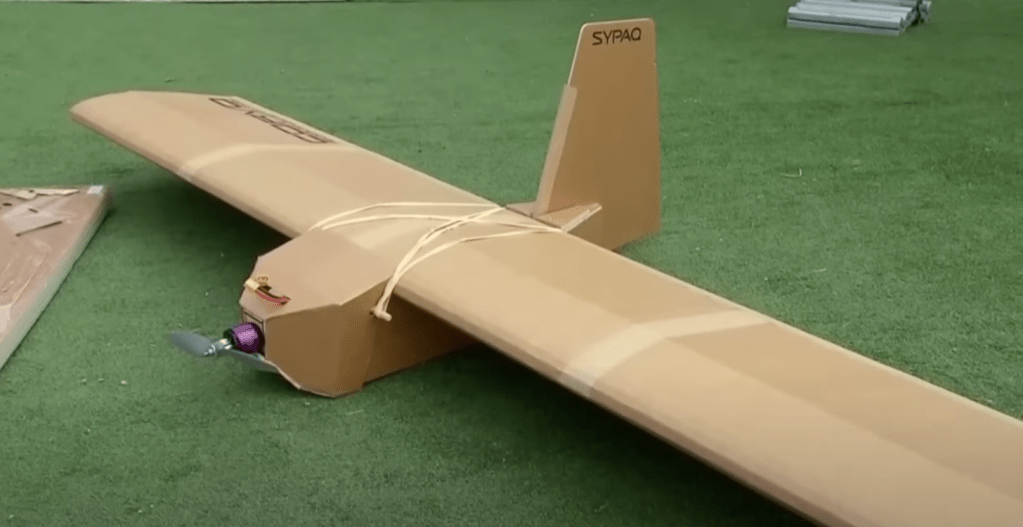
After proof of concept, Defence funded the project with $1.1 million. When Australia agreed to send Bushmaster vehicles to Ukraine, it threw the Corvos into the deal. Vicino said that while it had only been publicly known since March 2023, the company had been sending 100 a month since the second half of 2022.
Vicino said that the cardboard drones were primarily being used for getting ammunition to soldiers on the frontline, for intelligence gathering and for extending radio range. They did not come with cameras, but GoPros were being strapped to them to give them a surveillance capacity.
After feedback from Ukraine, the company has started developing an intelligence, surveillance reconnaissance (ISR) version, Vicino said.
The website TVP World called the cardboard drones “the Origami of Death” in a report earlier this year.
Vicino said the Corvo was not designed to carry bombs, but did not deny the Aussie cardboard drones were hitting Russia. “We don’t actually control how they’re used in the field and, logically, you’d assume they may be used for that purpose.
“People talk about kamikaze drones. That’s exactly what they are: sophisticated aircraft with precision guidance systems.”
George Vicino, SYPAQ founder
He said the testing in Ukraine had generated interest from other foreign governments, including the US.
SYPAQ Systems is owned by Vicino and his wife. His son, David, is general manager.
Ukrainian ambassador to Australia, Vasyl Myroshnychenko, is reported to be a fan of SYPAQ’s cardboard drones. “It looks like something that kids would play with but when you see what it can do, it’s really amazing,” Myroshnychenko said. “They have been very good at inflicting lots of damage on the enemy.”
Ukraine claimed it struck five Russian fighter jets in a kamikaze drone attack on Kursk Airfield last week, the Kyiv Post reported. “A source in the Security Service of Ukraine (SBU), said a wave of drones hit ‘four Su-30 aircraft and one MiG-29’ at the facility, as well as damaging two Pantsir missile launchers and the radars of an S-300 air defence system,” the Post reported, saying that “only three” were shot down.
A prominent Russian defence blogger known as “Fighterbomber” said SYPAQ’s distinctive cardboard drones were used in the attack which reportedly destroyed $100 million worth of Russian aircraft.
“Tonight, [Ukrainians] used them in a swarm, mixing drones with warheads with empty drones,” the Telegram post read. “I don’t know exactly what engines were on the drones, but if they were electric-powered, then they were not launched from Ukraine.”
On the defensive side of the equation, DroneShield is another Australian company supplying equipment to Ukraine to defend against Russian drones.
